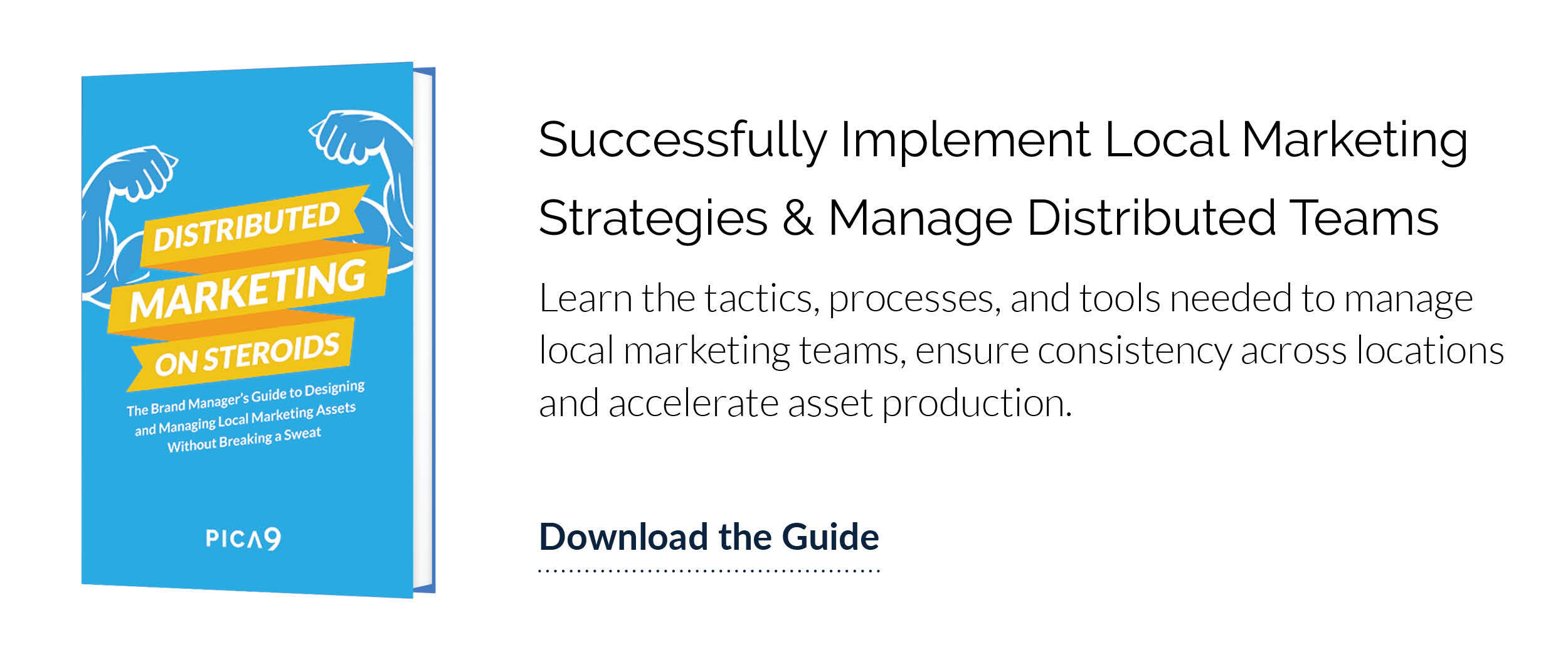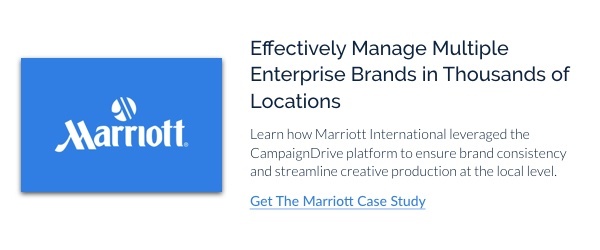After 16 years, Marketing Resource Management software is getting a makeover. Gartner research¹ recently shook up the enterprise marketing technology world when they announced they were redefining the MRM category, created in 2001, with a new concept called MRM 2.0.
For many enterprise brand managers, and other industry experts who have already moved away from all-in-one enterprise software platforms, this change isn’t entirely surprising. MRM 2.0 is a reflection of how the needs of today’s enterprise organizations have changed. According to the analysts Chris Ross and Adam Sarner, “The tools and technologies known as marketing resource management (MRM) have evolved.”
What is MRM 2.0?
MRM 2.0 doesn’t diminish the importance of tools used for managing marketing resources, or the value of software designed to solve big enterprise marketing challenges. MRM 2.0 is a reclassification of Marketing Resource Management as a category of categories, rather than as a specific software in its own right. Instead of a single piece of software operating as an all-in-one MRM, in reality, companies use a variety of tools to make up the three categories within MRM 2.0:
- Work Management
- Asset Management
- Performance Management.
The idea of MRM 2.0 was designed in direct response to Gartner’s research on how real enterprise brands, both with centralized and distributed business models, are really working in the new digital economy. MRM now operates in a world where digital marketing is no longer an exception, it's part of the established expectations in the marketing world. Because of this, MRM as a tool set has had to evolve. By using MRM 2.0’s categories as a guide to selecting technology, this update helps brands build a technology stack for today’s marketing needs.
How MRM Has Changed Over The Years
The 2008 research found in The Five Competencies of MRM 'Re-' Defined² by Gartner defined five distinct capabilities that “MRM software” brought to an organization:
- Creative Production
- Knowledge Management
- Marketing Fulfillment
- Performance Management
- Financial Management.
With MRM 2.0, Gartner has redefined MRM using just three categories: Work Management, Asset Management, Performance Management. This shift reflects what enterprise brands now expect from the discipline of marketing resource management. In addition, the new research report acknowledges that organizations are relatively unlikely to buy an MRM "product" off-the-shelf from an enterprise software vendor and deploy it without needing to make customized changes.
Today MRM is a combination of many different technologies working together to accomplish work, asset, and performance management.
Moving Beyond The One-Size-Fits-All MRM System
Enterprise companies used to expect to buy a single marketing resource management solution that would work for the entire marketing organization. After many failed implementations and paltry adoption, companies have begun to recognize the importance of marketing tools that are tailor-made for the specific challenges faced by large organizations.
This means that organizations can think about performance when building out their MRM, instead of worrying what they’ll have to sacrifice if they choose one vendor over another. Companies can design an ideal ecosystem for their marketing organization with the help of today’s lightweight cloud-based tools and flexible APIs.
Gartner’s new framework helps brands understand how to bring together many different tools under the MRM umbrella to fit their unique needs.
How to Shift Your Thinking About MRM
As a brand manager, you’ve likely come to rely on certain concepts from MRM 1.0. You may be used to digital asset management technologies, or tracking your campaign spend through financial management tools. These features haven't disappeared, they’ve just been simplified into new categories that better fit how marketing organizations operate today.
Distributed enterprise brands should look to invest in each of these three category areas. By diversifying your marketing technology to cover work, asset, and performance management, you are prepared to tackle many of the most common challenges organizations face today.
For more tips on distributed marketing, read our free eBook: Distributed Marketing on Steroids: The Brand Manager’s Guide to Designing and Managing Local Marketing Assets Without Breaking a Sweat

MRM 2.0: An Important Moment for Marketing Technology
Many organizations have been quietly evolving behind-the-scenes. They’ve replaced massive MRM software with cloud-based apps that best fit their needs, and have integrated these point solutions. Whether or not you’re already using multiple tools, MRM 2.0 represents an end to thinking about enterprise marketing from the perspective of a unified, single-vendor software that does everything. You wouldn’t download just one app to manage your grocery list, fitness, and banking, would you?
Gartner’s MRM 2.0 is about creating a broadly-accurate concept of marketing technology, without pre-determining what any one software should achieve. For brands, and software companies, this shift in thinking comes as a much needed update to thinking about MRM. In the past, companies in completely different verticals were struggling to fit their individual marketing requirements around clunky one-size-fits-all software. You can't expect a regional bank to need the same marketing technology as an international retail chain. They don’t have the same business model or regulatory requirements.
MRM 2.0 means technology that’s more precise, and the freedom for enterprises to choose solutions that work really well for their specific needs, regulatory requirements, and business models.
What does MRM 2.0 Mean for Distributed Enterprise Brands?
As a brand manager at a distributed enterprise brand, you’ve got a bit of an advantage when it comes to adopting MRM 2.0 thinking. You’ve long needed technology that goes beyond the basics of true enterprise MRM, which is rarely designed to suit the needs of local marketers. In fact, MRM 2.0 makes it easier for you to understand how to find the right technology solutions for your entire brand marketing organization.
Sources:
- https://www.gartner.com/doc/3638617/mrm--new-perspective-marketing
- https://www.gartner.com/doc/623330/competencies-mrm-defined

